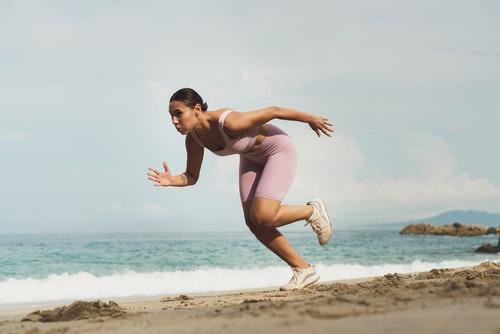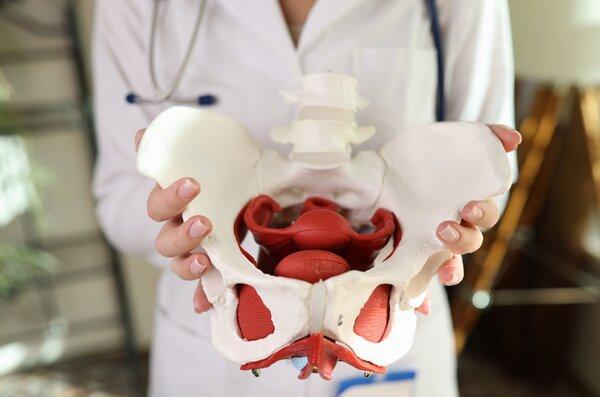
(Note: Some of the links in this post are affiliate links, and we will be compensated when you make a purchase by clicking through our links at no additional cost to you.)
Running and Incontinence: Separating Fact from Fiction
Running is a fantastic way to stay fit, clear your mind, and boost your mood. However, if you suffer from incontinence, you might be wondering whether hitting the pavement or the treadmill will make your condition worse. It’s a valid concern, and you’re not alone in thinking about it. In this blog post, we’ll go into the relationship between running and incontinence, dispel some common myths, and offer practical advice on how to manage incontinence while staying active. Let’s lace up our running shoes and get started!
Understanding Incontinence
Before we dive into the impact of running on incontinence, it’s essential to have a basic understanding of what incontinence is. Incontinence is a condition characterized by the loss of bladder or bowel control, resulting in unintended leakage. It’s more common than you might think, affecting millions of people, both young and old. There are various types of incontinence, including stress incontinence, urge incontinence, and mixed incontinence, each with its unique causes and triggers.
One of the most common misconceptions about incontinence is that it’s solely a problem of the elderly. In reality, it can affect individuals of all ages, including young adults and athletes. So, if you’re a runner dealing with incontinence, you’re not alone, and there are ways to manage it effectively.
Does Running Aggravate Incontinence?
Now, let’s address the million-dollar question: does running make incontinence worse? The answer isn’t a simple “yes” or “no.” It depends on several factors, including the type and severity of your incontinence, your overall health, and how you approach your running routine.
Type of Incontinence:
a. Stress Incontinence: Stress incontinence is often associated with physical activities that exert pressure on the pelvic floor muscles, such as running. It typically occurs when the muscles supporting the bladder are weakened, causing leakage during activities like sneezing, laughing, or running.
b. Urge Incontinence: On the other hand, urge incontinence is characterized by a sudden, intense urge to urinate, often resulting in involuntary leakage. While running may not directly worsen urge incontinence, it can be triggered by the jarring impact of the activity.
Severity of Incontinence:
The severity of your incontinence also plays a significant role. If you experience only occasional and minor leakage, running might not exacerbate your condition as much as it would for someone with more severe incontinence.
Health and Fitness Level:
Your overall health and fitness level are crucial factors. Maintaining a strong and healthy pelvic floor through exercises can provide better support to the bladder and reduce the impact of running on incontinence.
Also, your weight can have an impact. Excess weight can put additional stress on your pelvic floor, potentially worsening incontinence. If you’re overweight, combining running with a weight loss plan may help alleviate your symptoms.
Running Technique and Habits:
Your running technique and habits matter too. Proper form, breathing techniques, and pacing can minimize the strain on your pelvic floor. It’s crucial to listen to your body and adjust your running routine accordingly. Gradually increasing your mileage and incorporating rest days can help reduce the risk of exacerbating incontinence.

Hydration and Timing:
Pay attention to your hydration and timing. Drinking too much water right before a run can increase the pressure on your bladder, leading to leakage. Plan your hydration strategically, and be mindful of when you consume fluids before running.
Managing Incontinence While Running
Now that we’ve clarified the relationship between running and incontinence, let’s explore some practical strategies to help you stay active while managing your condition.
Consult a Healthcare Professional:
If you haven’t already, seek guidance from a healthcare professional, such as a urologist or a pelvic floor physical therapist. They can assess your condition, provide a tailored treatment plan, and recommend exercises to strengthen your pelvic floor muscles.
Pelvic Floor Exercises:
Pelvic floor exercises, like Kegels, are your best friends when dealing with incontinence. They help improve muscle strength and control. Incorporate these exercises into your daily routine, even on non-running days, to see lasting benefits.
Timing Matters:
Pay attention to your body’s signals. Empty your bladder before running, and consider timing your runs after a restroom break. This can help reduce the risk of unexpected leakage during your workout.
Choose the Right Gear:
Opt for moisture-wicking and breathable activewear to keep you comfortable during your run. Wearing an absorbent pad or liner can provide extra protection and peace of mind.
Practice Controlled Breathing:
Proper breathing techniques can make a world of difference. Focus on controlled, rhythmic breathing to minimize the pressure on your pelvic floor muscles while running.
Stay Hydrated Smartly:
While it’s essential to stay hydrated, be mindful of when and how much you drink before running. Avoid large quantities of fluid right before your run, and space out your hydration throughout the day.
Run on Softer Surfaces:
If possible, choose softer running surfaces like trails or grass instead of hard pavement. Softer terrain can reduce the impact on your pelvic floor.
Start Slowly:
If you’re new to running or returning after a hiatus, start slowly. Gradually increase your running duration and intensity to give your body time to adapt.
Listen to Your Body:
Always listen to your body. If you feel discomfort or excessive pressure on your pelvic area during a run, consider modifying your routine or taking a break.
Pelvic Support Devices:
Some individuals with incontinence find relief by using pelvic support devices like pessaries or support shorts. Consult with a healthcare professional to determine if these options are suitable for you.
Online Programs for Incontinence:
In addition to the above strategies, there are also specialized online programs designed to help individuals manage urinary incontinence while staying active. Two notable programs are the MUTU System and Every-Mother. These programs offer comprehensive guidance, exercises, and support specifically tailored to address pelvic health issues, including incontinence. They can be valuable resources for those looking to combine running with effective incontinence management. Be sure to explore these programs and consult with your healthcare provider to determine if they are suitable for your needs.
In summary, running doesn’t necessarily make incontinence worse for everyone. The impact of running on incontinence varies from person to person and depends on several factors, including the type and severity of incontinence, overall health, and running habits. While it might pose challenges, you can still enjoy the benefits of running while managing your condition effectively.
Remember, the key to successfully incorporating running into your life with incontinence is a combination of awareness, preparation, and seeking professional guidance. Consult with healthcare experts, adopt pelvic floor exercises, make thoughtful choices regarding your running routine and gear, and consider specialized online programs like the MUTU System and Every-Mother to enhance your incontinence management.
Incontinence shouldn’t be a barrier to living an active and healthy lifestyle. By taking proactive steps and prioritizing your well-being, you can continue to pursue your passion for running while managing your incontinence with confidence. So, lace up those running shoes, hit the track, and let nothing hold you back from reaching your fitness goals.






